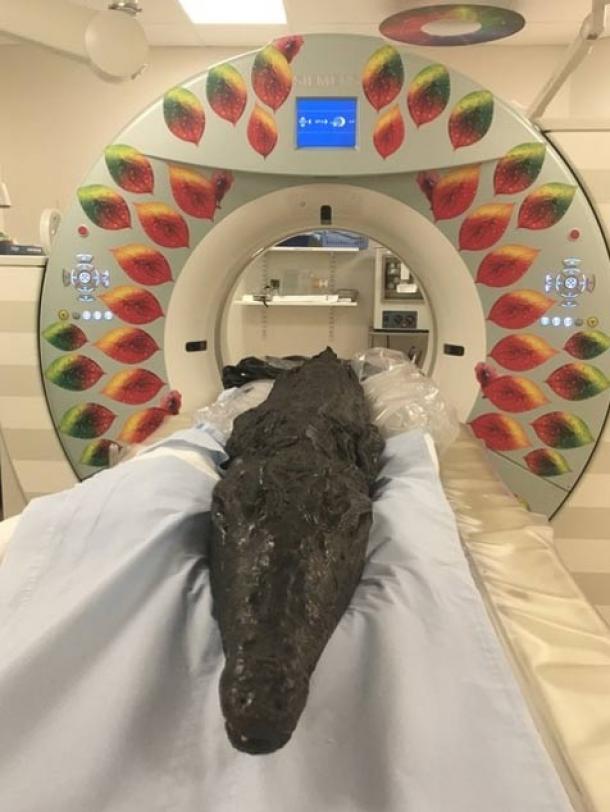Scientists have used state-of-the-art 3D imaging technology to piece together the life—and probable death—of a 2.2-meter-long crocodile mummified by the ancient Egyptians.
Discovery and Analysis
The researchers from The University of Manchester, along with Loughborough and Birmingham City Universities, revealed a freshly eaten fish still attached to its hook in the beast’s stomach, which probably killed it. Using specialist software in combination with X-ray and CT scanning, the scientists were able to virtually extract the hook from the mummy and then construct a replica first in plastic and then cast in its original material, bronze.

Historical Context
The age of the animal mummy—kept at Birmingham Museum and Art Gallery and known by its accession number, 2005.335—could be anything from between 2,000 and 3,000 years old, when the practice of mummifying animals was at its peak. The study, funded by the Arts and Humanities Research Council and the Leverhulme Trust, is published in the journal Digital Applications in Archaeology and Cultural Heritage.
Gastric Evidence

The croc had swallowed considerable numbers of small stones known as gastroliths while alive to break down chunks of meat and regulate buoyancy. The presence of more gastroliths higher up in the digestive tract, say the authors, indicates an attempt to break down the animal’s last meal and showed it died before they reached its stomach. The skeletal integrity of the fish also suggests that it was swallowed whole and had not yet been affected by the harsh digestive enzymes present in the first chamber of the crocodile’s stomach or the abrasive action of the gastroliths.
Mummification Process

The apparent short time span between the ingestion of the fish and the death of the crocodile also suggests, say the researchers, it was deliberately caught in the wild and processed for mummification as an offering to the crocodile god Sobek shortly afterwards. Healthy crocodiles were associated with fertility and plentiful agriculture. The Egyptians also believed you could protect yourself from danger by wearing clothing made from the skin of the animal.
Expert Commentary
Dr. Lidija Mcknight, lead author and Research Fellow from The University of Manchester, commented on X:
“Mummies have long been a source of fascination for museum visitors of all ages. Our work provides a unique opportunity to connect visitors to the story of this animal.”

She added:
“Crocodile mummy 2005.335 was a unique opportunity to apply scientific analysis to a large animal mummy. Our work revealed a great amount of information, both about the life of the crocodile and the post-mortem treatment of its remains. Whereas earlier studies favored invasive techniques such as unwrapping and autopsy, 3D radiography provides the ability to see inside without damaging these important and fascinating artifacts.
“We took the process a step further by replicating the hook in its original material, bronze. The Egyptians probably used a hardened clay mold into which the molten metal, melted over a charcoal-based heat source, would have been poured. Despite the passing of several millennia between the production of the ancient fish hook and the modern replica, the casting process remains remarkably similar.”
This study not only sheds light on the life and death of the crocodile but also highlights the advanced mummification practices of ancient Egyptians, offering invaluable insights into their culture and technology.

